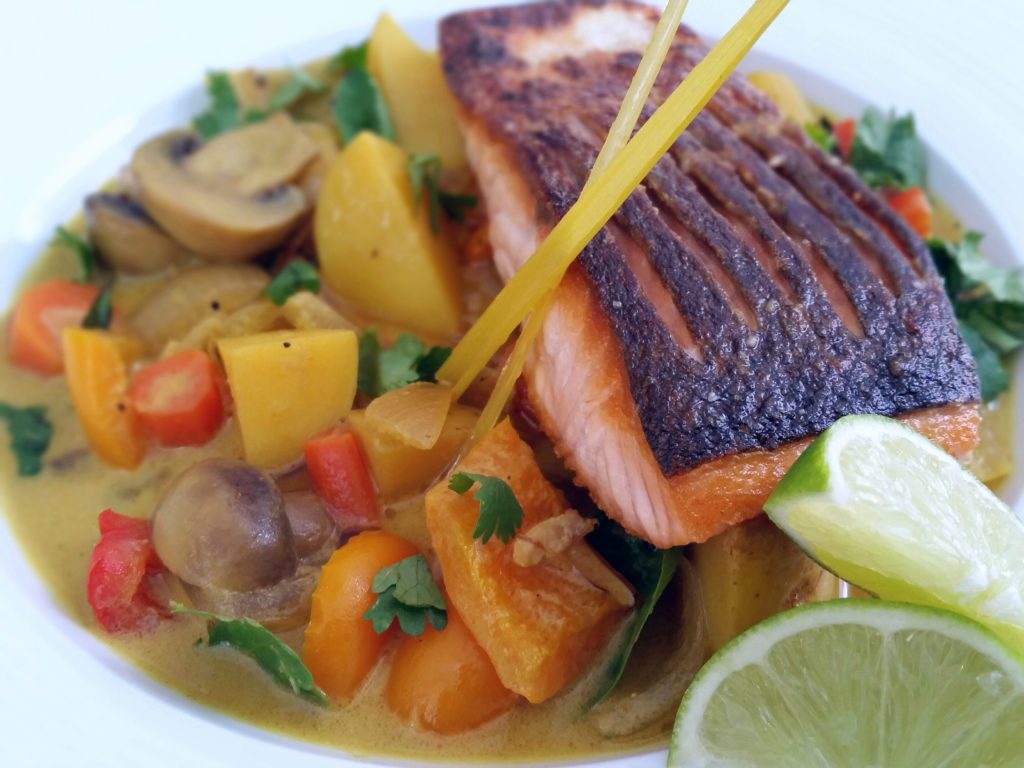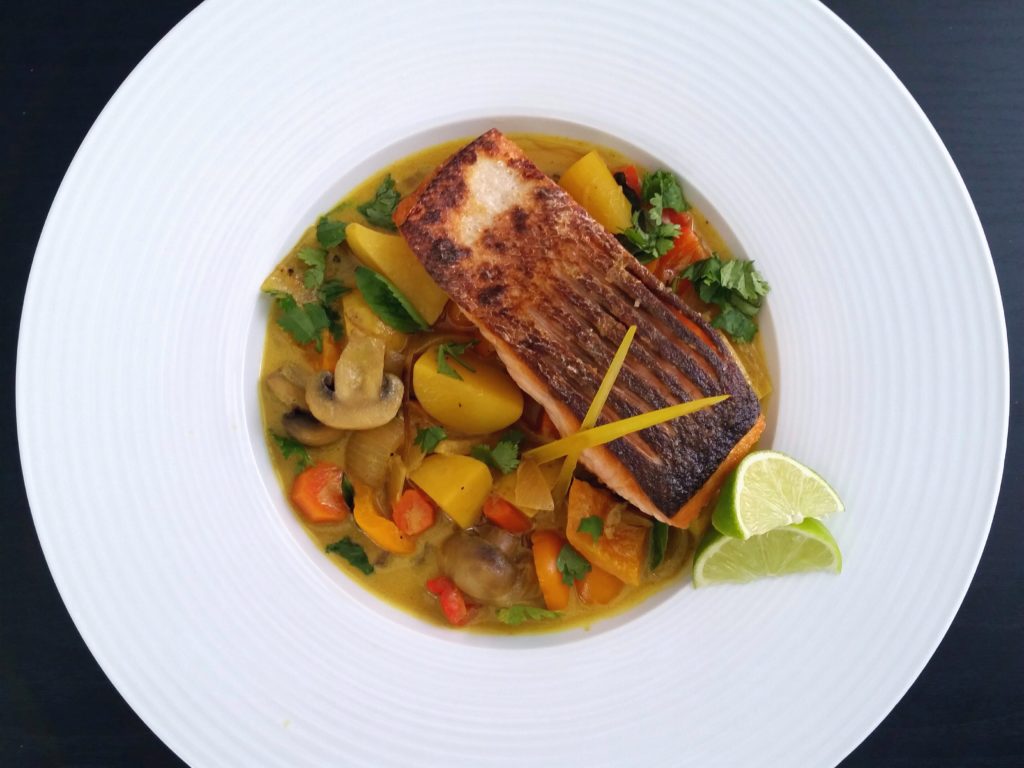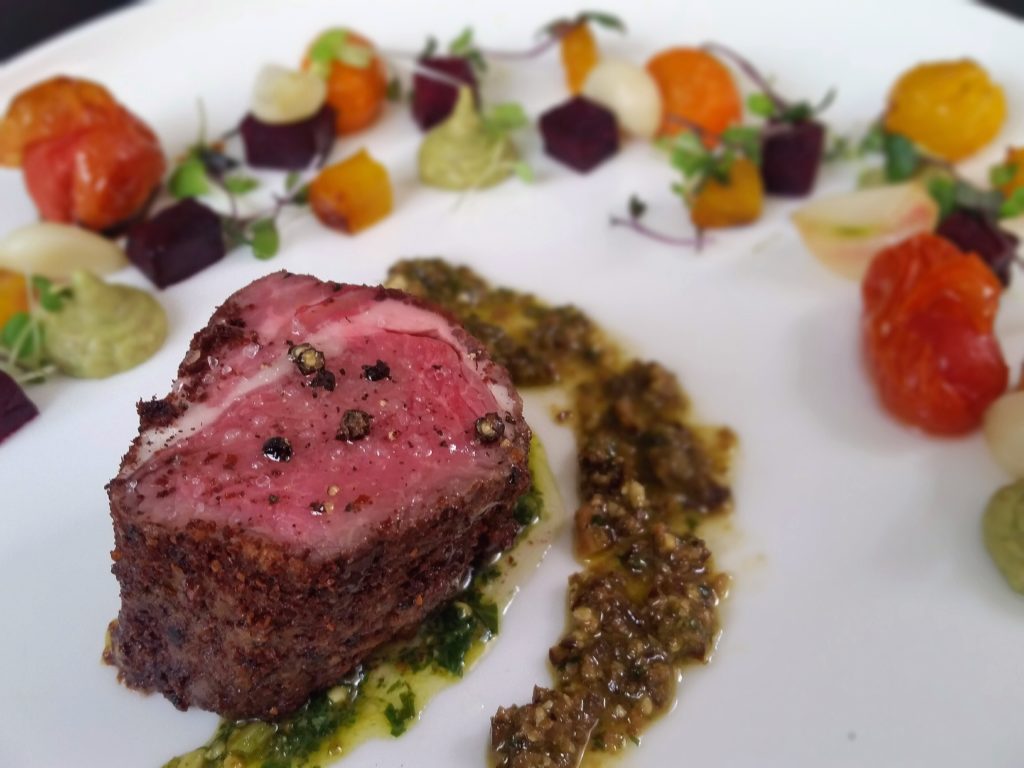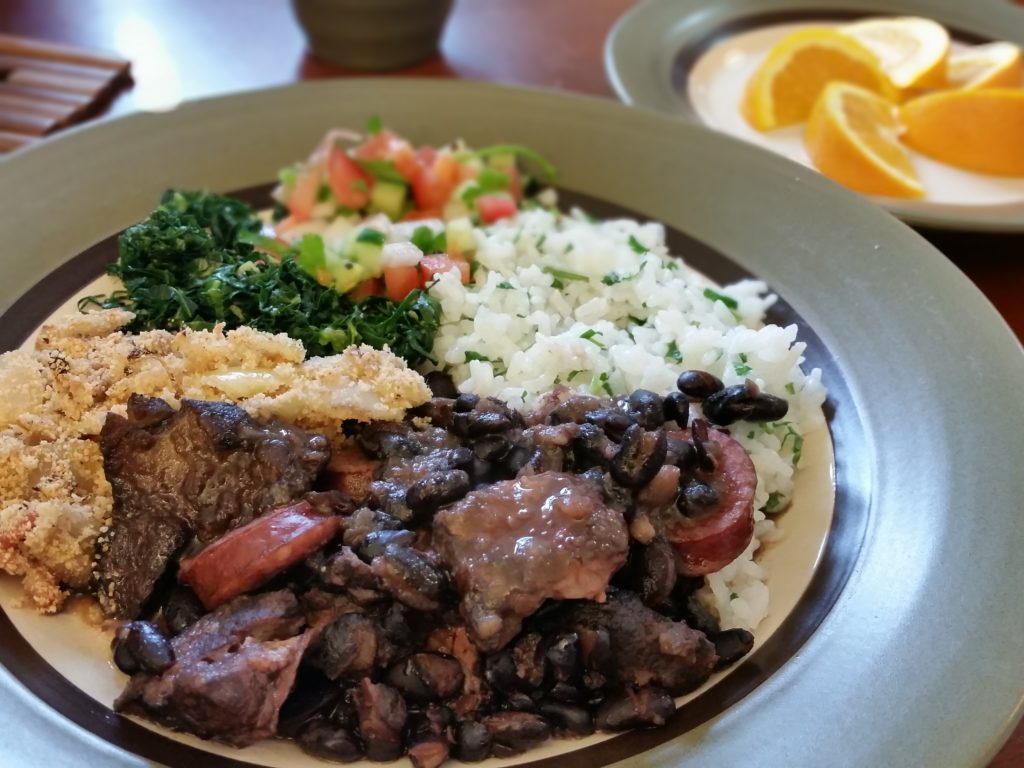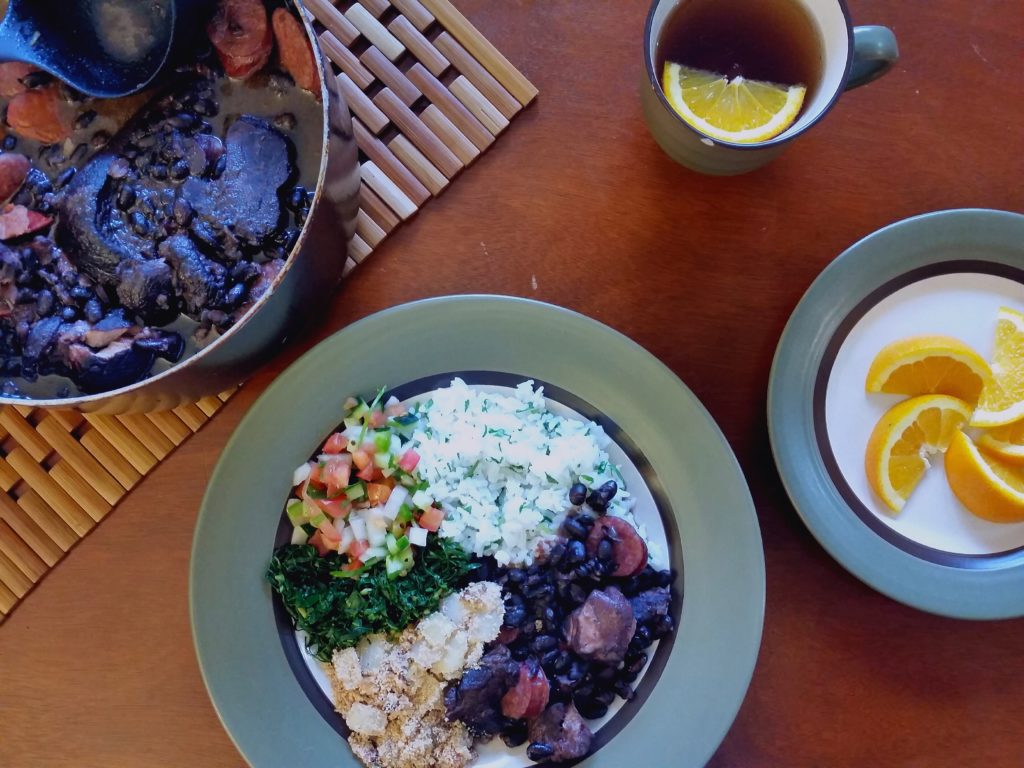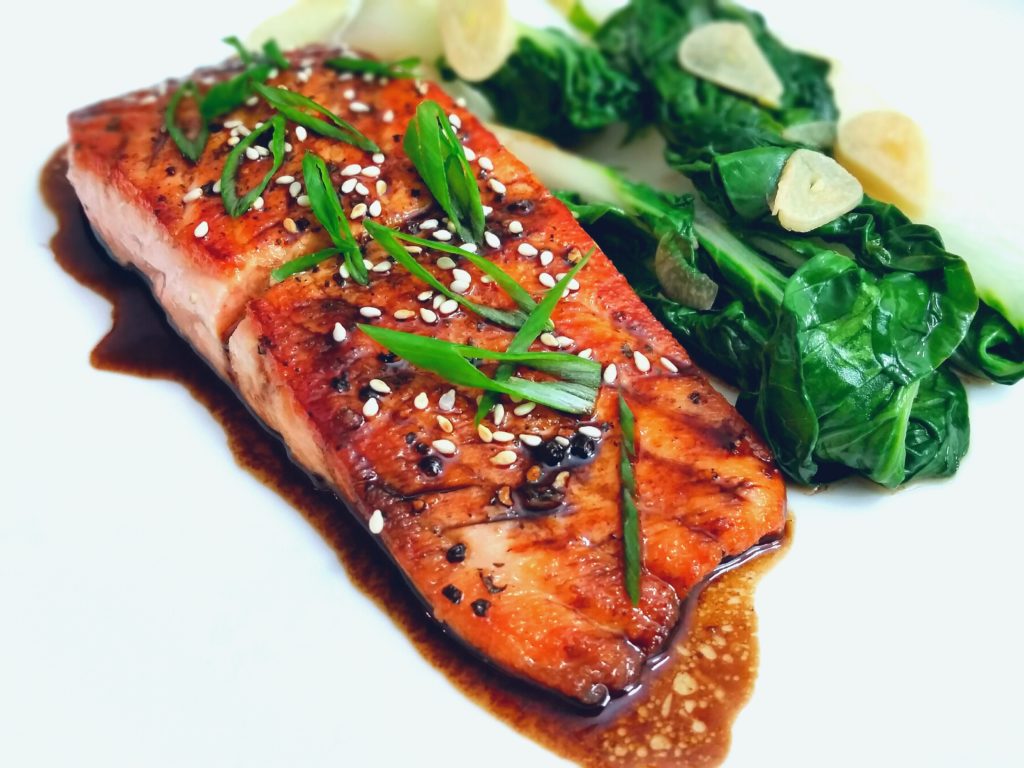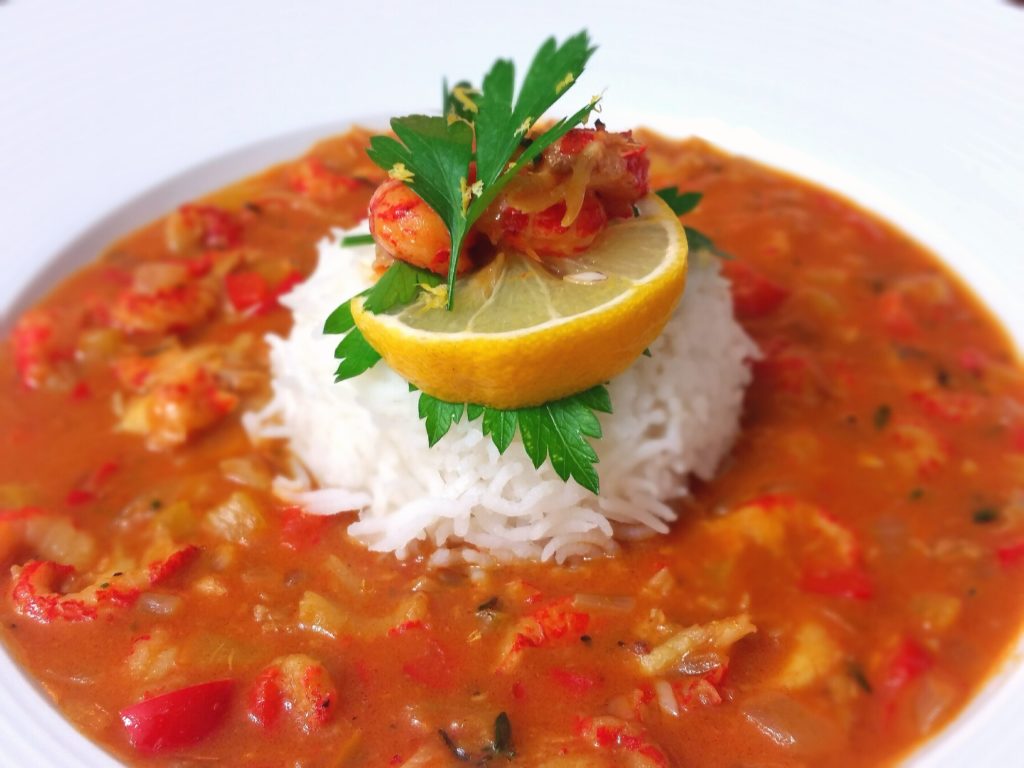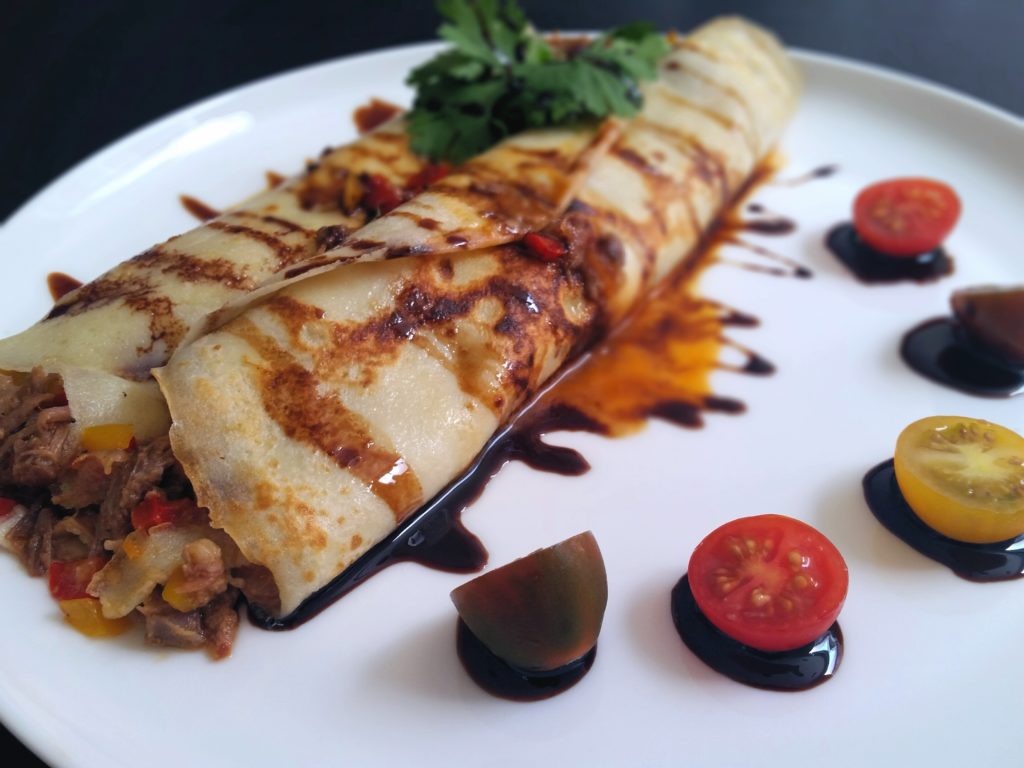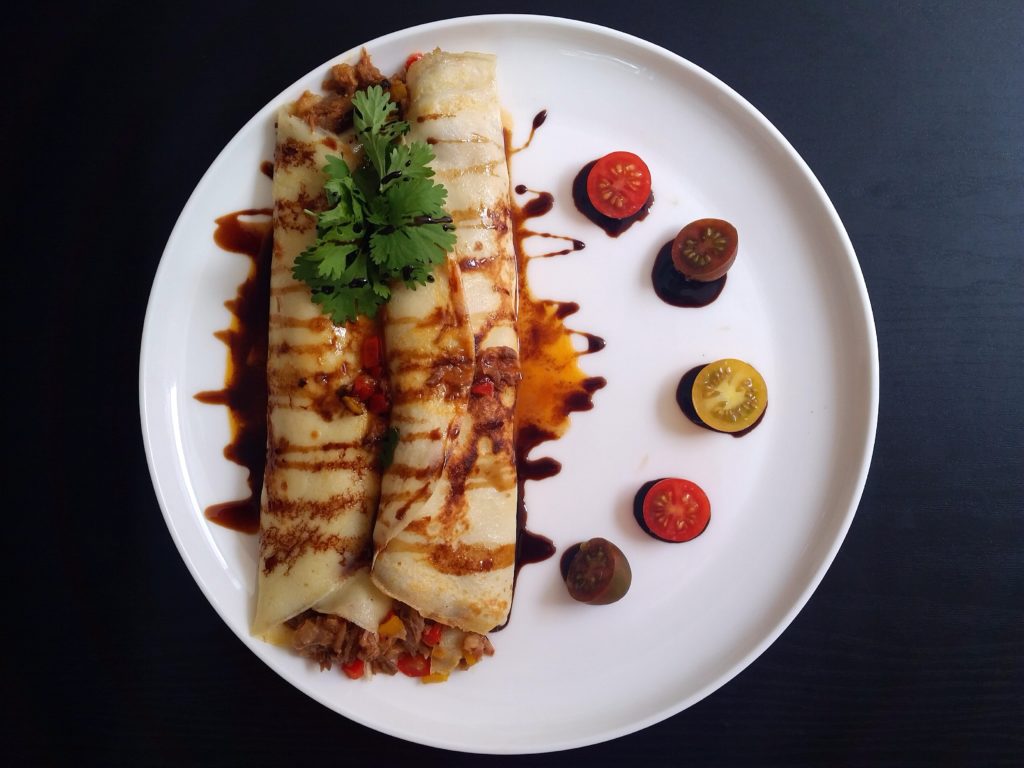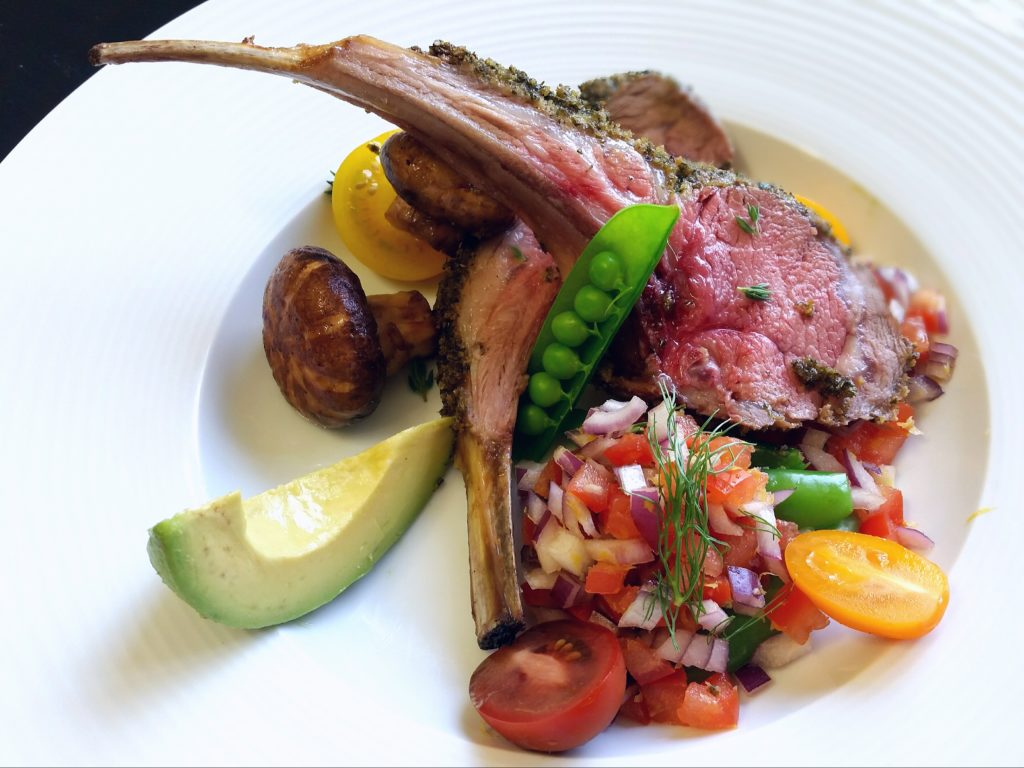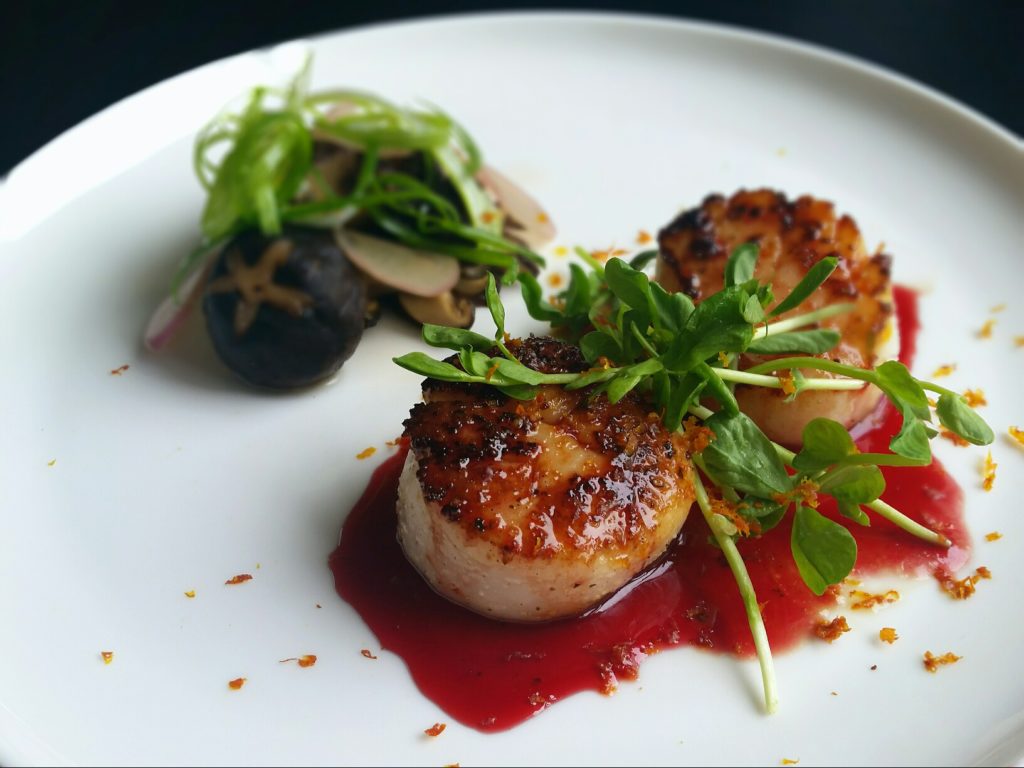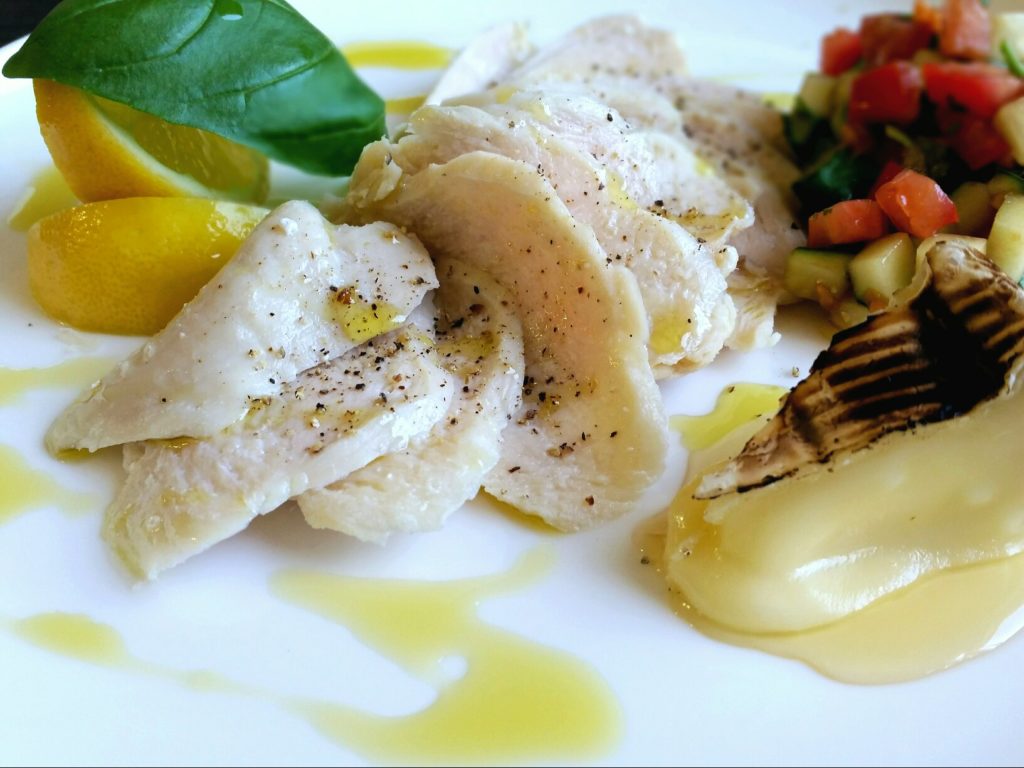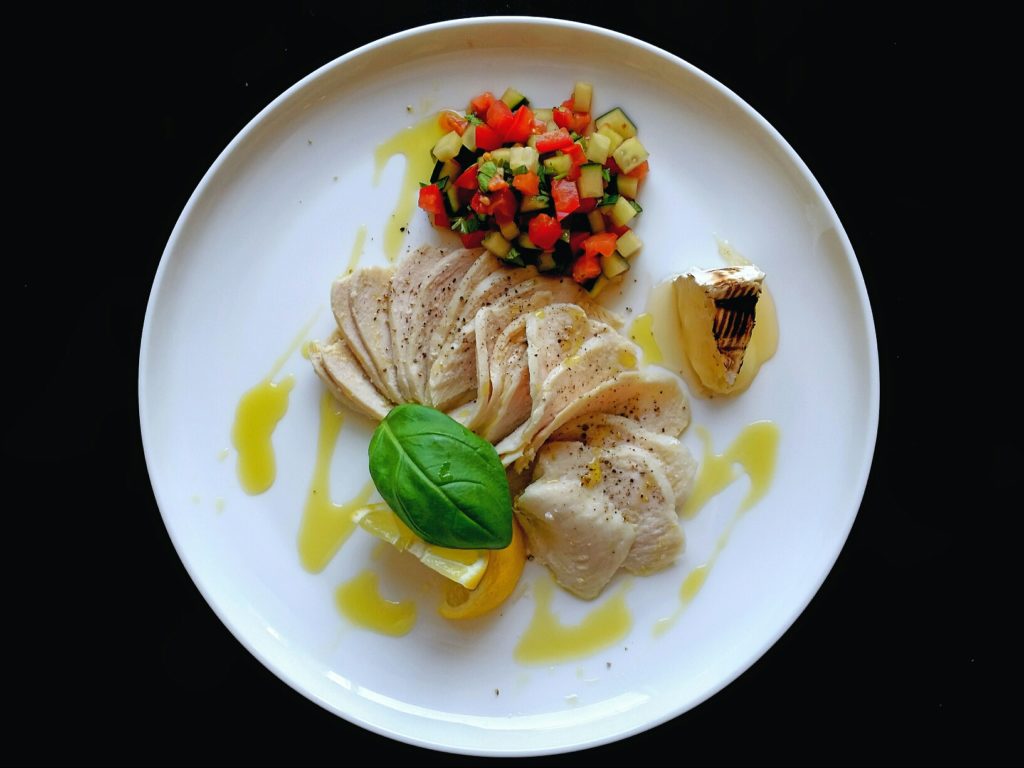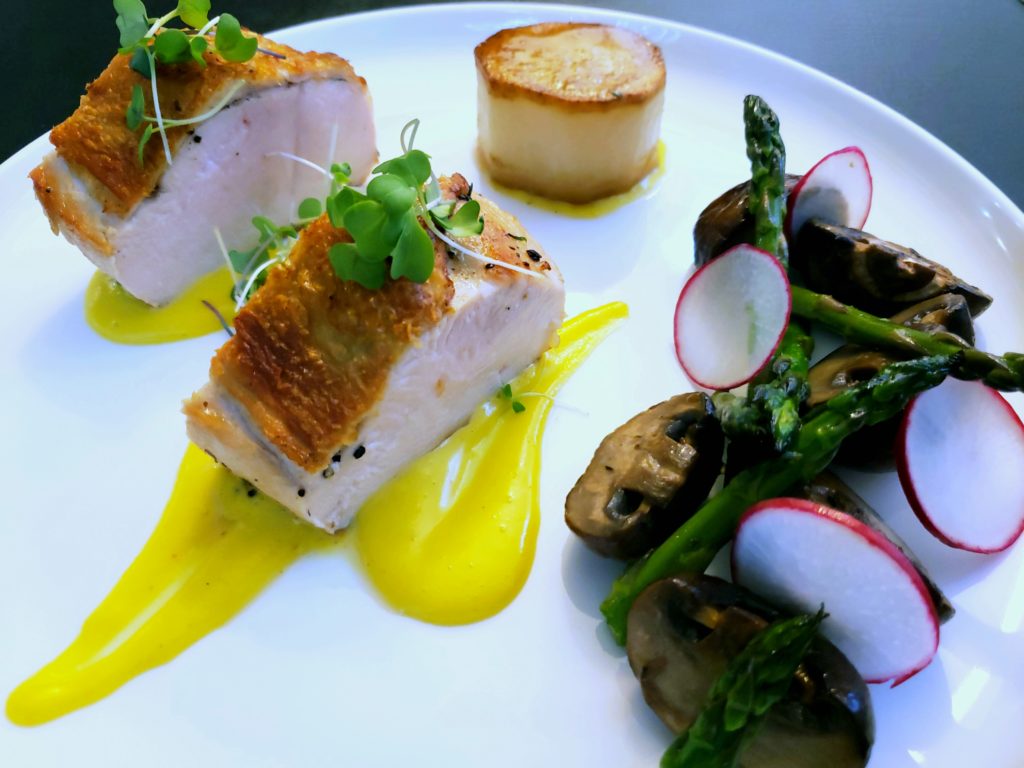 SKIN-ON CHICKEN BREAST LIGHTLY SEASONED AND MARINATED AND SEARED IN BUTTER. SAFFRON-LEMON AIOLI. FONDANT POTATO BRUSHED WITH ROSEMARY, THYME, FINISHED IN HOMEMADE CHICKEN STOCK. ASPARAGUS AND MUSHROOMS IN SEASONED CHICKEN OIL. MICROGREENS AND RADISH SLICES.
SKIN-ON CHICKEN BREAST LIGHTLY SEASONED AND MARINATED AND SEARED IN BUTTER. SAFFRON-LEMON AIOLI. FONDANT POTATO BRUSHED WITH ROSEMARY, THYME, FINISHED IN HOMEMADE CHICKEN STOCK. ASPARAGUS AND MUSHROOMS IN SEASONED CHICKEN OIL. MICROGREENS AND RADISH SLICES.
Oh boy, it’s good to be back in the kitchen! Over the last couple years, I realized just how poorly I eat when food isn’t a priority. Cooking can become a total chore in between being at the hospital and studying for exams. After way too many one-pot curries and stews at home, and burrito bowls in between caffeine shots, it became obvious how important texture is to enjoying food. How many times have you heard someone describe a food as having “a crunchy outside, and a soft and creamy inside” to advertise its deliciousness? In the multi-step process of tasting food, texture is second only to sight, and in my opinion is what separates great dishes from average ones. And so I was inspired to play with textures as I renewed my cooking creativity, keeping flavors simple and using just the technical basics – breaking down a whole chicken, keeping chicken breast moist, and making a simple sauce that brightens up the rest of the flavors on the plate.
How do different textures feature in this French-inspired ensemble? First, the crispy skin is obligatory. I borrowed a technique chefs often use for whole chicken – loosening the skin from the meat and seasoning the space underneath to both draw moisture away from the skin surface and to season the meat. Second, the sides. A fondant potato develops a delightfully crusty exterior that contrasts with a heavenly creamy interior that soaks up the flavors of chicken and butter that it cooks in (also, it looks like a scallop and Pea loves scallops). Then, veggies are cooked in the oil left over from the rendered chicken skin, just far enough to take off the raw edge but leave some crunchy freshness.
So, regardless of what you eat or cook, I hope you start discovering the magic of textures in your homecooking, taking it to another level! – Boo
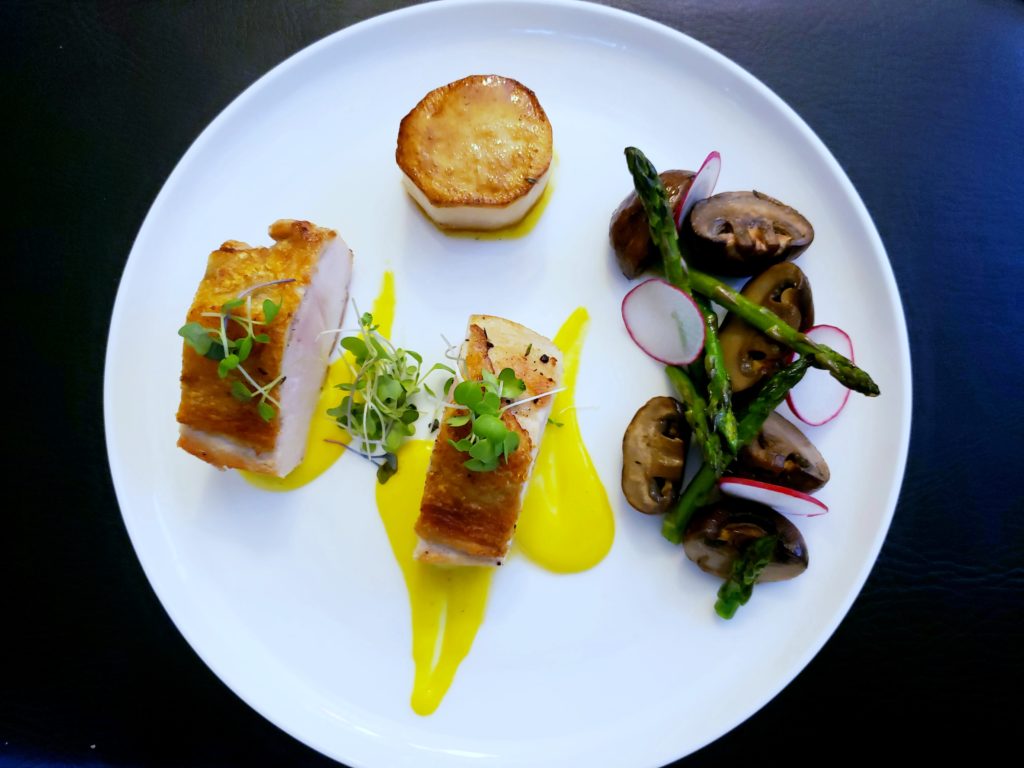
Servings: 2 (main portions)
Difficulty: ![]()
Crispy chicken breast:
- 1 (~12 oz) skin-on boneless chicken breast
- Marinade
0.5 tb butter
0.5 ts coarse salt
0.5 ts coarse black pepper
0.25 ts ground coriander - 1 garlic clove, crushed
- 1 rosemary sprig
- 2 thyme sprigs
- Pat the chicken dry, then slide fingers under the skin to separate skin from meat, keeping one long edge of skin attached.
- Rub butter on the meat underneath the skin, then evenly apply other marinade seasonings underneath the skin.
- Refrigerate chicken breast to marinate, 8-12 hours.
- Before cooking, rest chicken at room temperature, 1-2 hours.
- In olive oil over medium-high heat, place chicken skin-side down to sear until crisp, ~8-10 minutes. Meanwhile, use tongs to hold rosemary, thyme, and garlic together and brush in oil and on the chicken while cooking.
- Flip, and cook over medium heat until cooked through (internal T = 155 F), ~8-10 minutes. Continue to brush herbs over chicken skin.
- Rest chicken on cutting board, 5 minutes. Meanwhile, make saffron aioli.
- (optional) Saute 2 servings of vegetables in remaining chicken oil.
Saffron aioli:
- 1 egg yolk
- pinch of saffron threads
- 1 garlic clove, grated
- 1 tb lemon juice
- 0.5 c extra-virgin olive oil
- 0.25 ts salt
- 0.25 ts white pepper
- In a small bowl, soak saffron in 1 tb hot water. Set aside.
- In a mixing bowl, whisk egg yolk with lemon juice and garlic until slightly thickened.
- Gradually add oil in a slow stream while whisking until thickened.
- Beat salt, pepper, and saffron into aioli.
- Serve with chicken.
